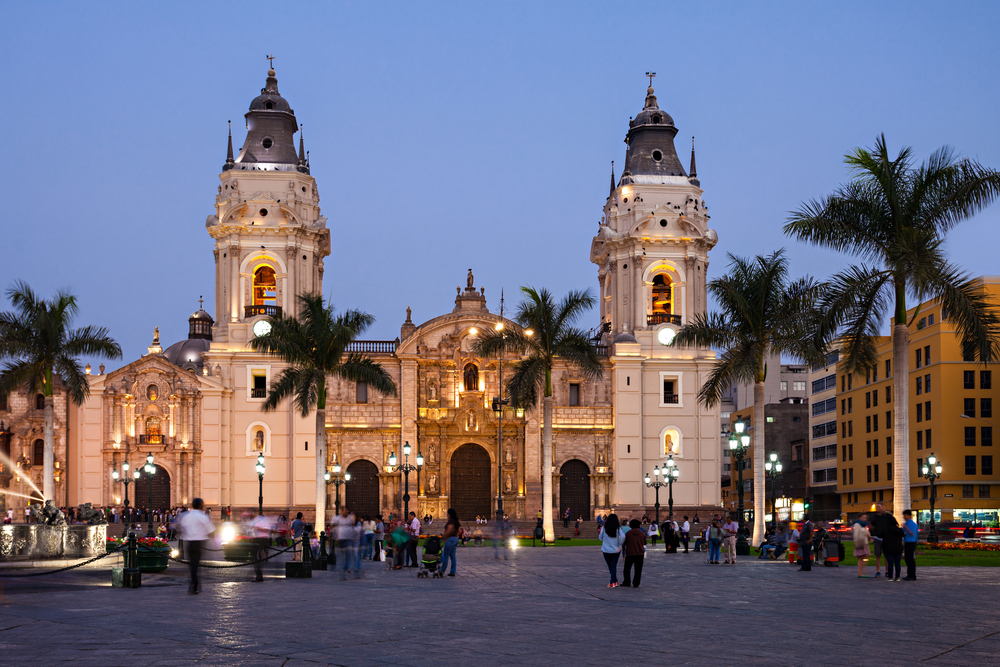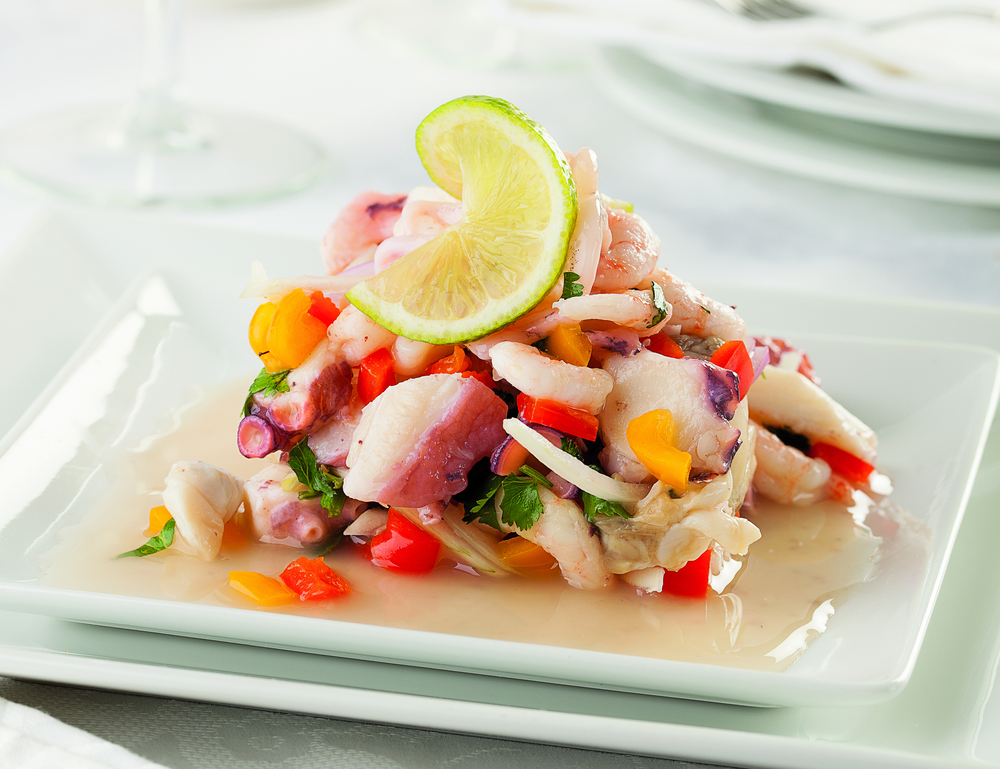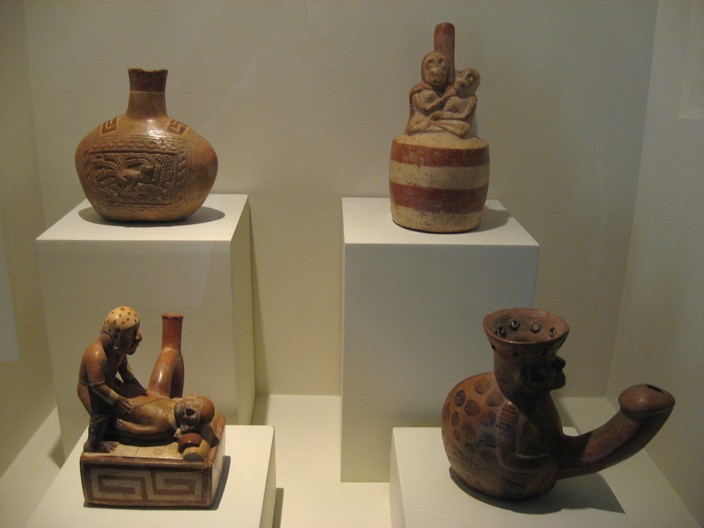Things to do in Lima, Peru
With its colonial charm, exceptional foodie scene, vibrant nightlife, fab shopping and gorgeous seaside suburbs, Lima has reinvented itself and nowadays has a way of captivating even the most sceptical of visitors. For the city’s true beauty and magnetism are revealed only to those willing to look beyond the lacklustre façade.
No matter how ‘short’ you intend your layover in the Peruvian capital to be, if you dive right into the best this city has to offer, we have an inkling that you’ll get to the end of your stay wishing you could extend your visit by just another day. Or three, perhaps. So don’t discount Lima as a mere ‘gateway’ to more rewarding destinations and don’t, whatever you do, make yours a barely-there visit.
As the main springboard to South America’s most celebrated highlights, and carrying centuries of illustrious Peruvian history on its back, Lima is that bonus Peruvian hidden gem you never even knew existed.

Overview of Lima, Peru
Lima is not just Peru’s largest city but it is also one of the most populated in the whole continent. It is a mind-boggling collection of tradition and modernity, and of different ethnicities, showcasing the history of the country better than a 1000 guide books ever could.
So fight the instinct to be totally overwhelmed and soak it up bit by bit. Morse by delectable morsel. Look beyond the endless noise and maddening traffic and you’re guaranteed to discover a true diamond in the rough.
Being such an extensive city with such congested streets means that your limited time will probably be divided only between the four most prominent neighbourhoods. As a tourist, the rest of Lima will arguably not have much appeal to you. Whether you have a whole week at your disposal, or just 48 hours in Lima, you’ll find plenty here to get you hooked.
Here’s a quick overview of Lima’s most noticeable hoods:
El Centro
Lima’s historic centre was once the city’s pride and joy, home of its most revered and important colonial treasures, yet a series of devastating fires and earthquakes – and swelling residential onslaught – means that appreciating those ‘shining’ gems takes a little bit more effort.
The epicentre of life in Lima is the still-impressive Plaza de Armas, which boasts the city’s main Cathedral and has the most noteworthy historical buildings all nearby. A mecca for budget travellers and backpackers, Lima Centro is a buzzy area where you’ll find great street food and loads of inexpensive souvenir shopping options.
You may not necessarily want to stay in the centre – but you certainly shouldn’t miss exploring this area thoroughly on foot.

Miraflores
The most fashionable suburb in Lima has, in the last decade, replaced Centro as the most popular tourist and expat enclave. Along with gorgeous mansions, here you’ll find the best hotels in town, the most exclusive shopping, as well as the best restaurants, cafés and bars. The seaside stretch is phenomenal at sunset and Kennedy Park offers a spruced-up alternative to the centre’s street-shopping experience.

San Isidro
The city’s financial hub is located between Centro and Miraflores and it’s considered the ideal residential suburb by well-to-do Peruvians. It doesn’t quite have the touristy feel of Miraflores just yet but San Isidro is still infinitely more polished than the centre.
Aside the fact that this suburb is home to a great portion of the city’s embassies, it also boasts a mix of beautiful churches, synagogues and temples, offering a glimpse into the fascinating ethnic diversity which has shaped the city – and the country – over the years. You’ll find plenty of lovely luxury hotels here too.
Barranco
Every city, big or small, boasts a bohemian, young, hip and happening suburb renowned for its raging nightlife and oh-so-trendy bars. In Lima, that would be Barranco. This was the hood of choice for wealthy Limeños during the colonial era and after independence became a magnet for the city’s most celebrated artists.
The diverse architecture, cool cafés, excellent art galleries and effervescent street life make this a wonderful suburb for a relaxing stroll during the day, even if you’re not interested in night-time shenanigans. If you don’t want to stay in the city centre but also wish to avoid the cookie-cutter luxury chain hotels of Miraflores, then look to Barranco for unique and inspiring accommodation options.

Lima’s Top Attractions
Sightseeing
A walking tour of the historic centre is a must and a good place to start is right in front of the awe-inspiring Lima Cathedral, built by conquistador Francisco Pizarro in 1564.
Within just four city blocks around Plaza de Armas, where you’ll also find the outstanding Church of Santo Domingo, you can discover half a dozen of the city’s most prominent historical landmarks, including the still-current Government Palace, the UNESCO-listed Monastery of St Francis with its spectacular dome and museum, the intricately decorated Torre Tagle Palace (which now houses the Ministry of Foreign Affairs) and the revered Merced Church, where Lima’s first-ever Catholic mass was held in 1534.
Dining
Just over a decade ago, Lima was beloved by tourists to Peru because it offered the best food in the country, even for vegos. But now, it offers the best food in the entire continent and is home to some of the most highly regarded restaurants in the world.
The food here is simply sensational, whether you dig into a fresh plate of ceviche at one of the seaside restaurants in Barranco, splurge on a degustation menu at acclaimed Astrid and Gaston, or pick up a piping hot chifa plate from the many vendors in Chinatown.
To reflect the blossoming foodie scene, the city now boasts quite a healthy selection of very good cooking and street-food tours, so if you want to dive headfirst (and mouth open) into this impressive side of the city in company, you certainly won’t find us stopping you. Because eating your way through Lima is as worthy a mission as any!

Museums
The most popular – and arguably the most beautiful – museum is the Larco Museum, which showcases the largest collection of pre-Columbian precious gems and erotic ceramics in the Americas. Yes, you read that right. Housed within the walls of a stunning 17th century mansion, the museum is perfectly designed and puts all others in the country to shame, and not only because they don’t have any naughty terracotta statues to show off.
For more pre-Columbian riches head to the MALI (Lima Museum of Art) where you can retrace the steps of the country’s last 3000 years of artistic history. The National Archaeology, Anthropology and History Museum, on Plaza Bolivar, is the city’s largest public museum and an institution that dates back almost 200 years. Here, you’ll discover priceless relics from all over the country, with artwork and archaeological finds dug up in the desert, the Andes, and the Amazon.

Shopping
It’s no surprise that Lima offers the most comprehensive shopping options in all of Peru and the wonderful bonus is that you can leave your souvenir splurge until the end of your trip if you so wish. From traditional Andean and Amazonian artefacts to the latest in international designer fashion, you’ll find it all here on sale in open-air markets, street stalls and glitzy malls.
The most popular items visitors take home from Lima are silver jewellery, handicrafts, ceramic wares and colourful textiles, the latter sold in an infinite variety of items such as bags, clothing, bedspreads, tablecloths, rugs and cushion covers.
Check out the artsy arcade of Santo Domingo and Mercado Central in the city centre, the string of souvenir shops along Avenida Ricardo Palma and Avenida Petit Thouars in Miraflores, as well as the Larcomar and Camino Real shopping malls, among dozens more.
The largest artisanal market in Miraflores, the aptly named Mercado Indio, is a great place for an overwhelming visual feast. Trendy and more upmarket handicraft boutiques are also opening up all over Miraflores and Barranco, and these offer somewhat of a more rewarding and definitely more relaxed shopping experience.
Nightlife
From salsa clubs to high-energy discos and cool live-music bohemian bars, Lima offers infinite options if you crave some after-dark action. The two most popular suburbs to go out at night are Miraflores and Barranco, with the latter being particularly interesting, as it transforms from a chilled-out artist quarter during the day to a consummate party hub the moment the sun sets.
Head to some of the waterfront bars for previos (the Lima equivalent of an aperitif) and you can enjoy their stellar location and seaside terraces (with phenomenal views) long before the music starts really pumping, which usually doesn’t happen until about 11pm.
No matter what your taste in music you’ll find a venue that’s dedicated to it (jazz, 80s funk, 90s R&B, Latino, you name it) so ask for recommendations at your hotel and hostel for the latest ‘hot new clubs’ in town.
If your idea of some ‘after-dark action’ involves a night at the theatre, then rest assured you won’t be going to bed early either. The performing art scene in Lima is as vibrant as its clubbing scene. The city is home to a dozen theatres, which regularly host concerts, symphony performances, ballet recitals and operas. Pick up a copy of the daily El Commercio for listings of current theatre shows.
Best Time to visit Lima
Peru is best visited during the dry but cold months of winter (May-October) which is when the lack of heavy rains keep the Inca Trail to Machu Picchu undisturbed, and mosquitoes at bay in the Amazon. Coastal Peru is shrouded in garua (a dense fog) for most of winter, and this is what gives Lima – at least at first glance – its gloomy appearance.
But that is a small price to pay for finding the rest of the country on its very best (climatic) behaviour. Throughout the Andes, winter is prime travel season, with the highest tourist peak being in July and August, to coincide with European and North American summer holidays.
Visiting Peru during the dry season means that overland travel along high-altitude mountainous roads is not disrupted by flash flooding, and although nights can be quite cold, you should still expect daytime temperatures to hover between 20 and 25 degrees Celsius.
Best Way to Visit Lima
The Jorge Chavez International Airport is one of the busiest aviation hubs in all of South America, and although the airport in Cusco is increasing its services to other South American cities, Lima still remains the main entry point into Peru.
As such, it is connected to all corners of the globe, with the most popular connections being from London, Madrid, Amsterdam and Frankfurt in Europe, Miami, Atlanta or Houston in North America, and Toronto in Canada. For visitors living in Australia and New Zealand, the best option is to take a flight to Santiago, and then hopping across to Lima from there. This turns out to be much more time-savvy than taking a flight through Buenos Aires or any of the connecting cities in the US.
To Lima….and beyond
Lima is exceptionally well connected to all major destinations in Latin America, as well as boasting plenty of domestic services to its most popular neighbours, including Cusco, Arequipa, Iquitos, Puerto Maldonado and Huaraz. From the capital, you can explore the darkest depths of the Amazon Rainforest, discover the former Inca stronghold of Machu Picchu (along with a myriad of other archaeological sites) and experience life in the high Andes Mountains.
Want to know more about all the amazing Peru experiences you can enjoy from Lima? Check out our Signature Peru itineraries or get in touch.

Where Will You Go Next ?
- Popular Destinations
- Antarctica
- The Arctic
- South America
- Central America
- More to explore
- Amazon
- Antarctic Circle
- Antarctic Peninsula
- Argentina
- Bolivia
- Brazil
- Canadian Arctic
- Chile
- Colombia
- Costa Rica & Panama
- East Antarctica
- Ecuador
- Galapagos Islands
- Greenland
- Guatemala & Honduras
- Machu Picchu
- Mexico
- Patagonia
- Peru
- South Georgia and Falkland Islands
- Spitsbergen
- Sub Antarctic Islands

Talk to one of our experienced Destination Specialists to turn your Antarctic, Arctic and South American dream into a reality.
Contact us